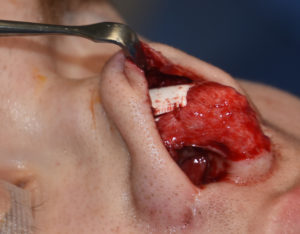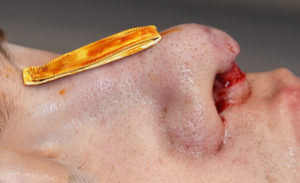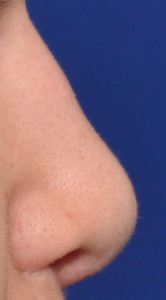Background: Dorsal augmentation is done for a wide variety of structurally deficient noses. When the amount of dorsal augmentation is small, the patient’s septum or ear harvest sites will produce adequate volume. But when the augmentation requirements are significant, rib grafts are needed if an autologous approach is desired.
Rib grafts have a long history of success in the nose for dorsal augmentation. When used as as solid carved block their one well known downside is warping, causing an asymmetric nasal appearance. This potential problem, as well as the need for meticulous solid graft carving, can be bypassed by the diced cartilage grafting technique. This creates a very malleable dorsal graft that can be shaped intraoperatively, and for a limited time after surgery, to avoid the risk of graft warping/asymmetry.
While the diced rib graft technique has advantages over a solid rib graft for dorsal augmentation, it is not a perfect technique. There is the risk of some graft loss by the small dicing and/or containment method and contour irregularities along the dorsal line are known to occur as a result.
Case Study: This young male had a prior rhinoplasty history of a diced rib graft augmentation for a congenital deformity. While the rib graft provided much needed height and tip projection, irregularities developed over time as more complete healing occurred.


Case Highlights:
1) While a diced rib graft can add the largest volume for an autogenous dorsal augmentation rhinoplasty, its contours may not always be completely smooth.
2) A thin ePTFE implant over a prior diced rib cartilage graft can create a smoother dorsal contour.
3) ePTFE works well on the dorsum long-term when the implant stress on the overlying skin is not excessive.
Dr. Barry Eppley
Indianapolis, Indiana





